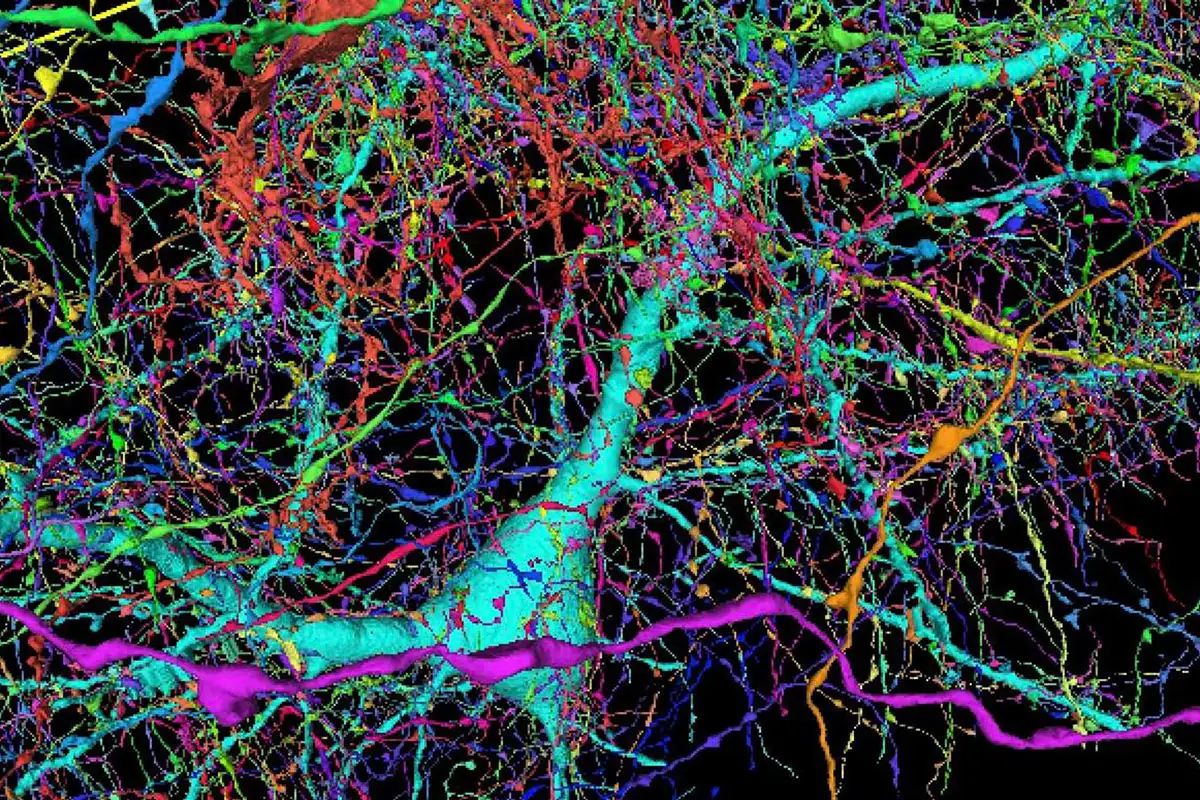A Human Perception of Reality
The Brain, Reality, and Familiarity: How We Navigate the Universe


In the lecture on Familiarity, we explored a profound concept: how our brains mirror the structure of the Universe, allowing us to navigate Reality and experience the world around us. This connection between the brain and the Universe is more than just a metaphor—it’s a real, tangible experience that shapes our perception of life, relationships, and even how we find our mates.
The Brain as a Mirror to Reality
The first image in the lecture shows the intricate web of neural connections within the brain. The complexity and interconnectedness of neurons are stunning, resembling an ever-expanding, dynamic network. It turns out this structure isn’t unique to the brain. The second image reveals something surprising: the structure of the Universe, on a large scale, is strikingly similar to the pattern of neural networks.
This comparison isn’t just coincidental. The similarity in these structures hints at a deeper connection between us and the cosmos. Just as neurons transmit information within the brain, galaxies and cosmic matter are connected, transmitting energy and forces across space. The brain and the universe share a common blueprint, and this allows us to perceive and interact with the world in a way that feels familiar.
Familiarity as a Navigational Tool
Our brains are built to recognize patterns. This innate ability is what helps us navigate the complexities of life. We process experiences and form connections based on what feels familiar. Familiarity creates a sense of comfort, predictability, and understanding, guiding us through reality.
This idea extends beyond just recognizing faces or places—it’s the foundation of how we perceive our entire world. In the lecture, the concept of familiarity is explained as a phenomenon that goes beyond mere recognition. It is a reflection of how our brains are structured to mirror reality itself, making every experience an encounter with something we already understand on a deeper, almost cosmic, level.
The Role of Familiarity in Relationships
Familiarity doesn’t just apply to how we navigate physical reality. It’s also central to how we form human connections, particularly in relationships. Mates, for instance, find each other through shared familiarity. In the context of the Mate Singularity Theory, which we’ve explored previously, familiarity is the magnetic force that draws compatible individuals together.
This connection through familiarity can be explained biologically, as well as philosophically. When we meet someone who feels “right,” it’s often because there’s a shared set of patterns—whether emotional, cognitive, or even physical—that align. Our brains, mirroring the structure of reality, recognize these patterns in another person. This recognition creates a sense of deep understanding and comfort, paving the way for meaningful connections between mates.
The Power of Perception
One of the most intriguing ideas from the lecture is the role of perception in shaping reality. Because our brains are structured like the universe, our perception serves as a navigator, allowing us to interact with and make sense of the world. This means that our experiences are not passive; we actively engage with reality through our senses, constantly interpreting and reinterpreting our surroundings based on what feels familiar.
Our perception is not static. It evolves as we grow and learn, continually shaping our understanding of the world. Just as the universe is ever-expanding, so too is our perception of it. As we encounter new experiences, our brains adapt, expanding our internal universe of knowledge and familiarity.
Conclusion: Embracing the Connection
Familiarity isn’t just about recognition—it’s a profound connection between our internal world and the external universe. The brain, with its neural networks, reflects the structure of reality itself, allowing us to navigate life with an inherent understanding of how the world works. This connection shapes not only our experiences but also our relationships, guiding us toward compatible mates and meaningful interactions.
In embracing familiarity, we recognize that we are not isolated individuals drifting through life. Instead, we are deeply connected to the universe and to one another through a shared structure, making our perception of reality an active and dynamic experience.
You can view the full lecture on Familiarity here: Familiarity Lecture.
Repairing Mental Pathways
There are many mushrooms that help with this process that are commonly documented, but two that we suggest are Lion’s Mane and Turkey Tail mushrooms. Lion’s Mane helps the finer connections in the nervous system reconnect, while Turkey Tail helps detox while growing back the larger connections in the nervous system.
State of Emergency
The reason why Familiarity is mostly reserved for states of emergency is because of the usage of Cannabidiods that utilizing such behaviour uses. When those Cannabidiods are used up, then nourishment is lowered to that level, leaving a person malnourished, requiring Cannabis, or at times, meat, where Cannabis is unavailable in our current system.


Leave a Reply